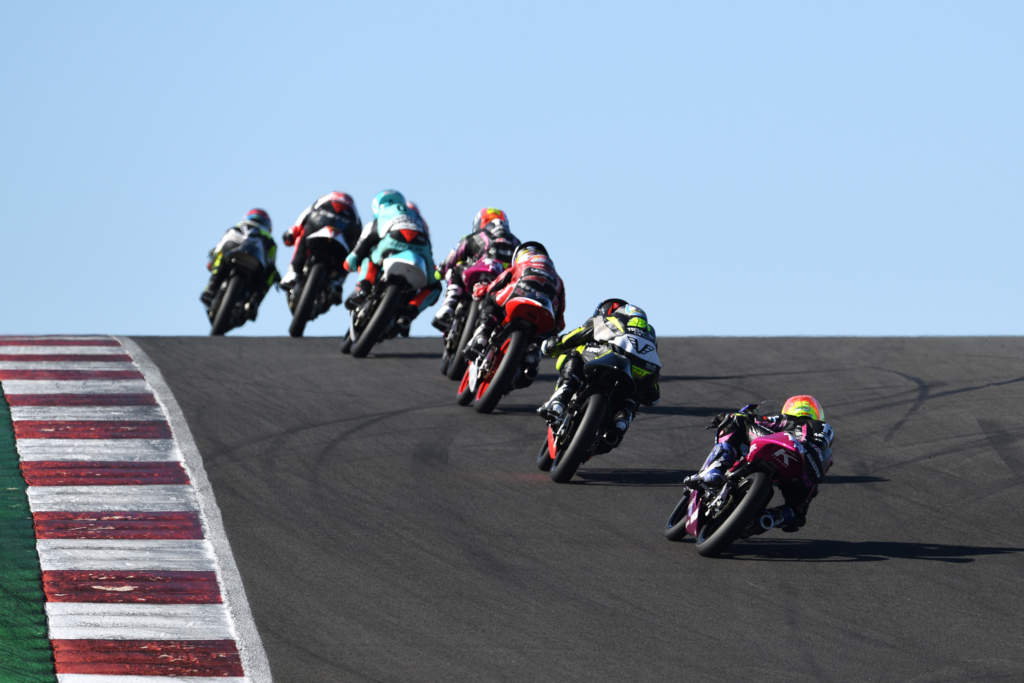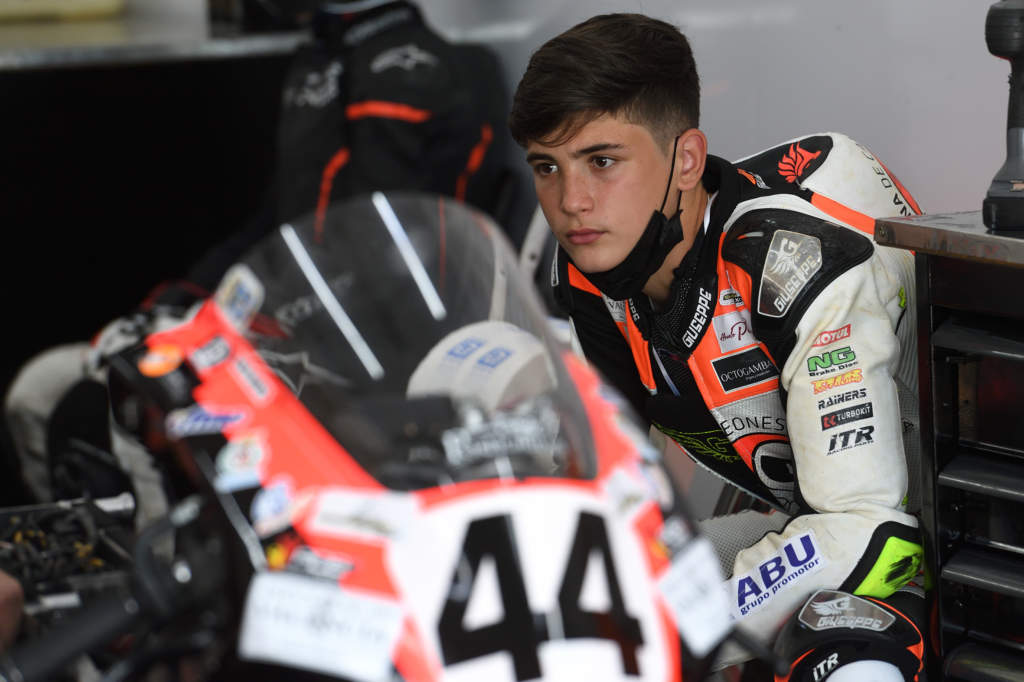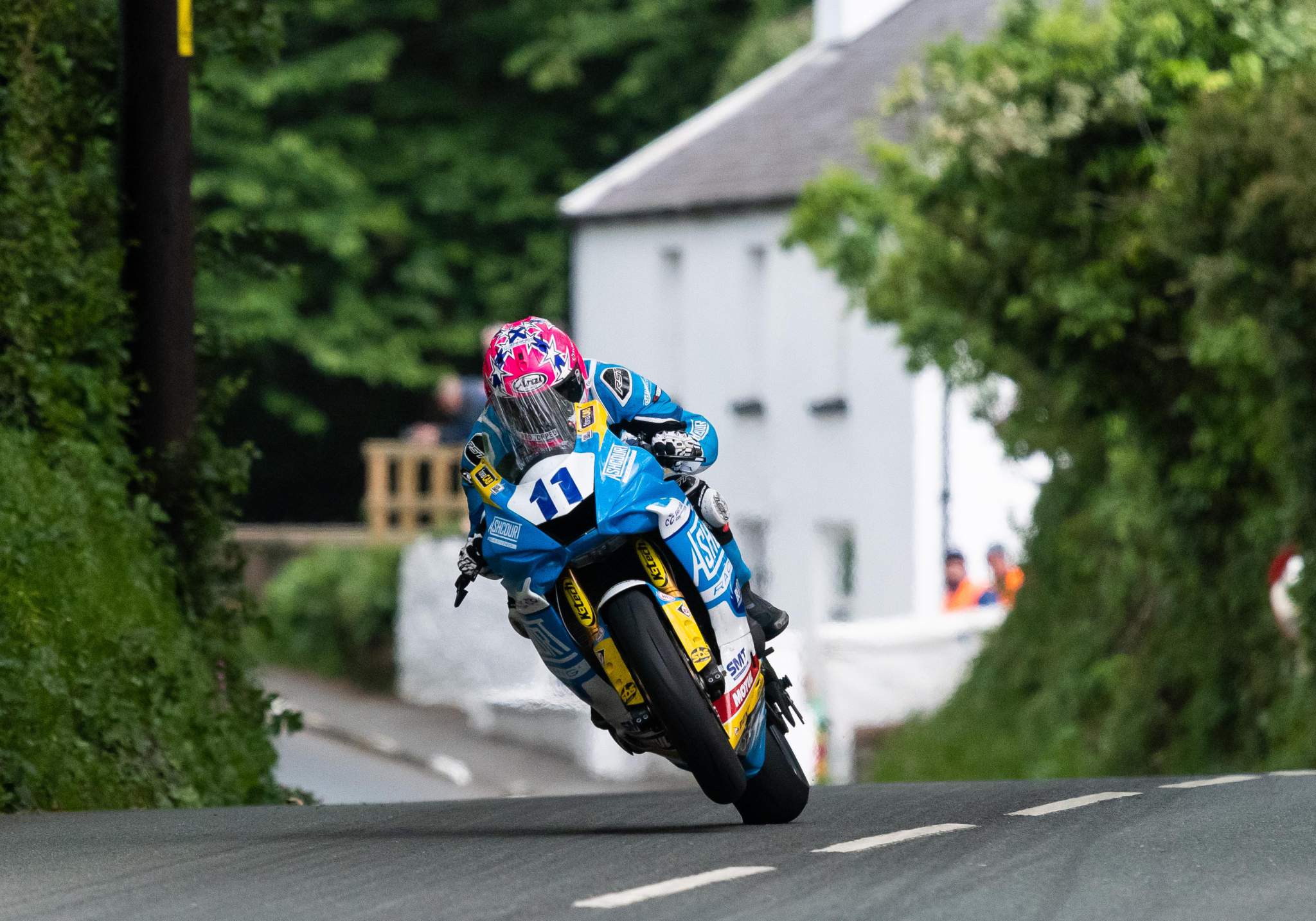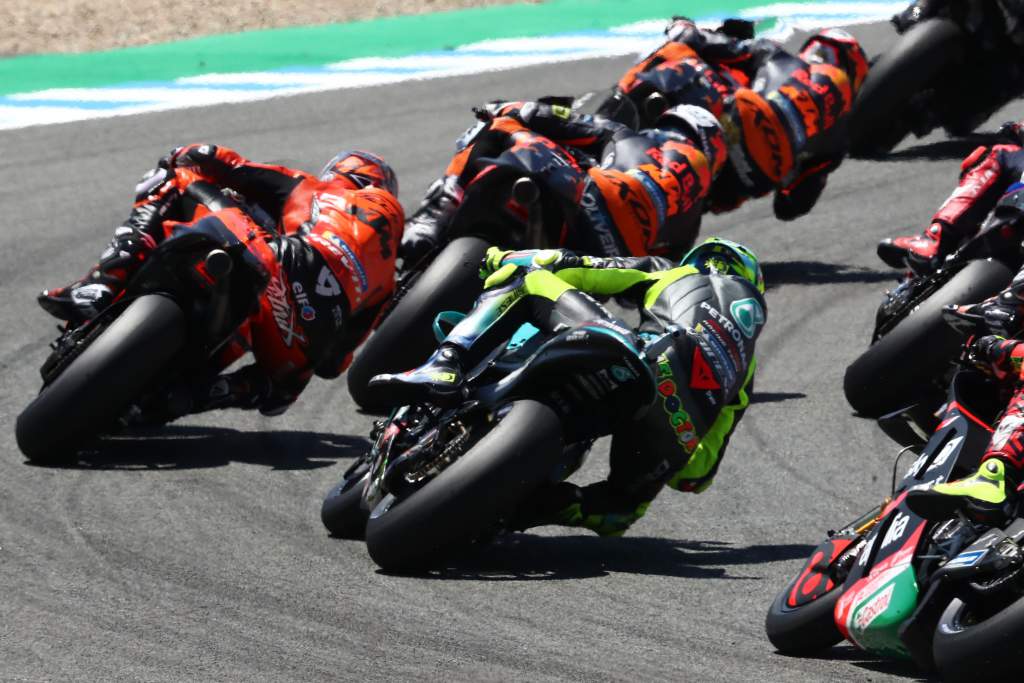This past weekend brought tragic news from MotoGP feeder series the European Talent Cup, when 14-year-old Spaniard Hugo Millan was tragically killed in a multi-bike collision at Turn 5 of the Motorland Aragon circuit during a round of the one-make series run by MotoGP promoters Dorna.
The youngster was struck by other bikes after falling during the race, and he joins other names like Jason Dupasquier (19 years old), Andreas Perez (14 years old) and Afridza Munandar (20 years old) as tragic victims of almost identical crashes that cost them their lives in only the past two or three seasons.
And the worst thing about it – the thing that makes me feel slightly dirty writing about it – is that we’re all in part to blame for it. Fans always want closer racing, and MotoGP has done a spectacular job in delivering it.
The current rule book means that from MotoGP all the way down to feeder series like the European Talent Cup, the on-track battles have never been closer; in fact, the smaller classes are even more competitive.

And with that level of close racing, there’s just no margin for error. If even a small error occurs in a pack, there’s a high probability that someone else is going to be in close proximity to the rider when they land on the ground.
In an era where safety improvements have moved on dramatically from only a few decades ago, it’s the hardest type of crash to do anything to make safer, too. Helmet technology is the best that it’s ever been, airbags are mandatory, walls and fences have been moved further and further away from the circuit – but it’s hard to dissipate the energy created by a 120kg or heavier object doing 120mph or more.
It’s something that I’ve written about before, and my suggestion back then was the same as it is now – the only way to make racing safer by removing these types of crashes is to make it less competitive, to increase the margin between first and last beyond the few hundredths of a second it regularly is now.
There are two ways of doing that; by going back to an era where competitiveness between manufacturers and between factory-supported and satellite bikes was measured in seconds not tenths, or by making the smaller capacity bikes faster.
It’s not hard to see that while MotoGP has had similar crashes, most notably with the tragic loss of Marco Simoncelli in 2011, it’s far less common in the premier class than in Moto3 or the various series using Moto3-derived bikes.
Make the bikes a little faster, the theory goes, and you make slipstreaming less important. Riders can set lap times on their own, without a tow, and races become more broken up, like we already see in bigger-capacity series. Sure, we lose some of the chaos and mayhem of Moto3, but right now that feels like a price worth paying.
In fact, that’s doubly the case right now when you consider that the riders who are being most affected by these crashes are, for all intents and purposes, children.

Hugo Millan wasn’t old enough to buy himself a beer or to drive a car. Had he committed a crime, he wouldn’t have been tried as an adult in his native Spain.
To expect him to fully understand the risks of what was doing on Sunday was unreasonable, for all the same reasons that we don’t let kids drive on the road
For years, the most dangerous format of two-wheeled racing has always been the Isle of Man TT, with the race’s reputation for costing at least one life a year unfortunately earned by experience. But everyone who races at the TT is an adult.
In fact, often they’re racers with considerable experience, as event organisers look to recruit established names to join the ranks of newcomers there.

Which is what leads me to this question: is it time that grand prix racing took a long, hard look at itself and asked “do we really need to be putting 13-year-old kids onto 155mph motorbikes?”.
And yes, I fully understand that as a MotoGP journalist, I’m just as guilty as anyone of being part of the problem. I love to be amazed at the feats of youngsters like Pedro Acosta or Raul Fernandez too. I’ve filed many a headline about the record-breaking stats of 20-year-old 2013 world champion Marc Marquez.
Maybe it’s because I’m getting a little older – 2022, without Valentino Rossi, should be the first time ever that every rider I’m writing about is younger than me.
But in many ways, Rossi proves my point for me that increasing the upper age limit by a few years wouldn’t make too much of a difference down the line. He’s 42 years old, he’s still racing, and he’s hardly crippled by injury or held back by his advancing years.

Similarly, while the likes of Cal Crutchlow, Dani Pedrosa and Andrea Dovizioso are on the far side of their mid-thirties, they’re still in decent nick, as two of them are going to demonstrate next time out at the Styrian Grand Prix by lining up on the MotoGP grid.
If we kept kids on minibikes (and thanks to brands like Ohvale there are more options than ever before these days) until they were a little older, it wouldn’t make any difference to the lengths of their careers. And it might make the sport feel a little bit less dirty, when you have to read headlines more and more regularly about children losing their lives in the pursuit of our entertainment…





